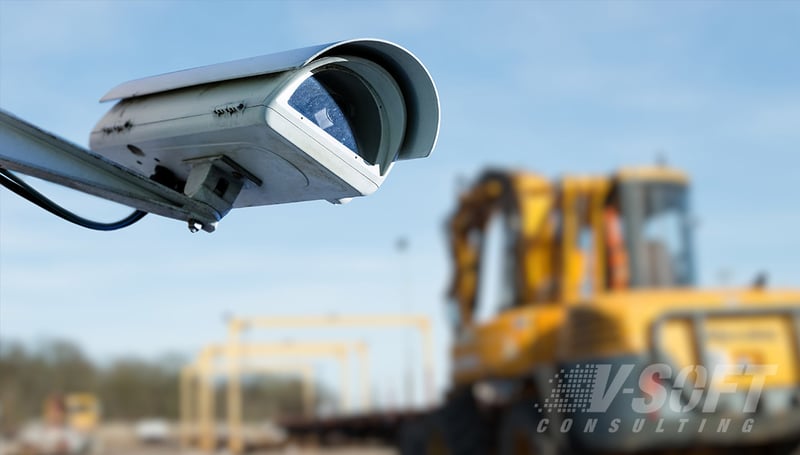In the construction industry, hyper-automation can mean the ability to leverage advanced technology such as AI (artificial intelligence) and IoT (Internet of Things) to empower companies to transform how their business gets done. We're not talking about physical robots like many might be led to believe but an intelligent and automated approach to routine tasks that allows humans to focus on the important aspects of getting business done
What is Hyper-Automation?
According to Gartner one of the top ten trends for technology in 2020 is "Hyper-Automation" which in basic terms is incorporating many technologies to automate tasks. Better defined, hyper-automation is the applying of advanced technology with many tools centered on Robotic Process Automation (RPA), Internet of Things (IoT), Intelligent Business Management Software (IBMS), and components of Artificial Intelligence (AI) with terms like Machine Learning (ML), Neural Networks (NN), and Deep Learning (DL). While all these terms are great, lets dig into a few of the 'whys' of AI and hyper-automation.
The overall AI impact within manufacturing includes optimizing operations, increasing productivity, new revenue stream growth, and increased customer loyalty."
- Gartner
Construction Safety and Personal Protection Equipment (PPE) Management with AI
Industrial job sites have hundreds if not thousands of workers reporting to the job and leaving throughout the day. The health, safety, and security of the workers and job-site is kept under control through safety directors on the job, spot safety checks, and signs requiring adherence to safety regulations. These controls also serve to minimize costly insurance premiums inherent with hazardous work. However, the staff required to get close to 100% on safety regulations for reduced accidents or violations is almost impossible and/or cost prohibitive.
Construction safety automation makes a significant difference in uncovering safety violations before they become accidents or liabilities. Camera systems monitoring where equipment, workers, and visitors travel empower, previously used for security and reviewing or monitoring of footage, can be enhanced with AI powered software that:
- Confirming safety equipment is being worn at all times.
- Ensuring on-site workers are in proper pedestrian walking lanes.
- Monitoring equipment to make sure they are properly managed.
- Providing real time data of job site behaviors so adjustments can be made based on data, not speculation.
Thanks to a technology based approach to safety on the job, supervisors can be notified the moment any person removes safety gear, walks outside of a safe lane, or equipment is left running. Not only does this reduce accidents but makes for satisfied safety regulations and reduced insurance premiums.
Real-Time Project Standards Adherence Automation
A similar approach to safety can be applied to adherence to project goals, timelines, percentage of completion, and adherence to architectural plans. Cameras can provide inputs to highly intelligent AI powered software that has the specifications for the land, building, or most any facet of the project.
An example of this technology in action: cameras monitor pre-set and continually updated project specifications and alerts project management team members if standards aren't being met. This can address small adjustments versus costly revisions that veer from original project specifications.

The possibility in real-time to monitor almost any facet of a construction project allows workers to focus on getting the work completed. Focusing human involvement on higher end reviews of data and AI findings improves construction scheduling, reduces costs, and creates a more efficient project.
Project and Administrative Automation Thanks to Intelligent Technology
How many project meetings in a trailer lasting a couple hours have taken place and no one was sure what was really accomplished? The reality is this is one of the challenges in construction management. Proper notes and minutes of meetings are often the burden of Project Managers forcing them to an administrative role which is not their skill set. In today's world of advanced technology it is possible to have voice activated devices, (everyone has a phone with Apple's Siri, Amazon's Alexa and so on.) The devices can record minutes, assign tasks, and auto schedule follow up meetings all via voice command. Minutes of meetings are kept in audio files, intelligently stored, and can even be fully and autonomously transcribed, where information can be retrieved on explicit "keywords' mentioned during the discussions.
Moving this another step further, imagine AI powered voice assistants for every manager on the job. Managers can speak to this intelligent assistant that intuitively gathers data of the job site allowing for hands-free task management. Every notation that requires a written note, email, or a retrieval of plans to review can all occur via simple voice commands.
With little hope of reversing a long-standing labor shortage, automation technologies are the way forward for the construction industry when it comes to enhancing productivity and boosting profits."
AI, Voice, and Automation is Changing Construction
We've only just begun to uncover the possibilities of AI and advanced technology for construction management. Drones are becoming more prominent in professional services to gather data and take instructions intelligently which is where AI comes in. Voice enabled technologies synced with intelligence empower a more effective management of projects saving costs. Safety is now intelligent which automates safety monitoring and saves expensive short falls with less accidents and violations.
Safer work places, real time monitoring of construction for quality control and, access via voice make for the next generation of construction.
















